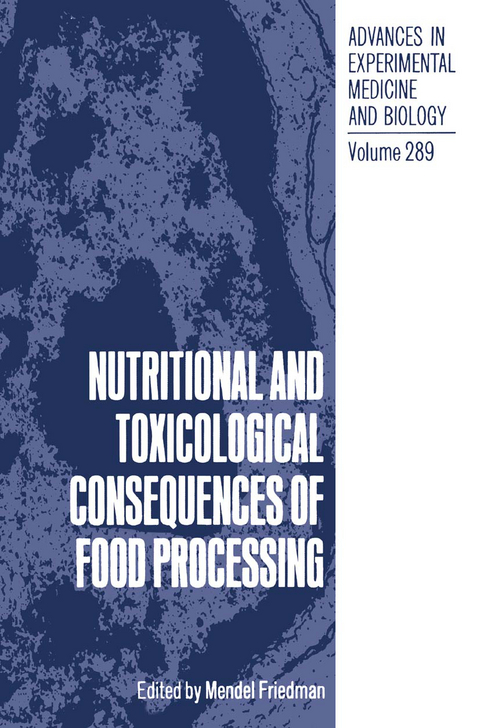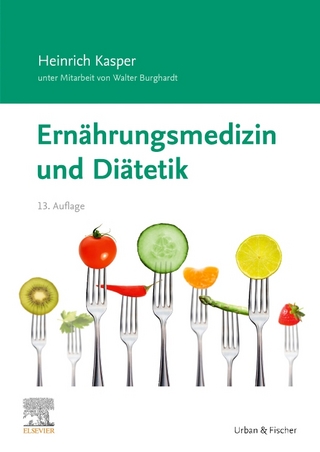
Nutritional and Toxicological Consequences of Food Processing
Kluwer Academic/Plenum Publishers (Verlag)
978-0-306-43891-2 (ISBN)
A variety of processing methods are used to make foods edible; to pennit storage; to alter texture and flavor; to sterilize and pasteurize food; and to destroy microorganisms and other toxins. These methods include baking, broiling, cooking, freezing, frying, and roasting. Many such efforts have both beneficial and harmful effects. It is a paradox of nature that the processing of foods can improve nutrition, quality, safety, and taste, and yet occasionally lead to the formation of anti-nutritional and toxic compounds. These multifaceted consequences of food processing arise from molecular interactions among nutrients with each other and with other food ingredients. Since beneficial and adverse effects of food processing are of increasing importance to food science, nutrition, and human health, and since many of the compounds formed have been shown to be potent carcinogens and growth inhibitors in animals, I organized a symposium broadly concerned with the nutritional and toxicological consequences of food processing. The symposium was sponsored by the American Institute of Nutrition (AIN) -Federation of American Societies for Experimental Biology (FASEB) for its annual meeting in Washington, D.C., April 1-5, 1990. Invited speakers were asked to develop at least one of the following topics: 1. Nutrient-nonnutrient interactions between amino acids, proteins, carbohydrates, lipids, minerals, vitamins, tannins, fiber, natural toxicants, etc. 2. Effects of radiation. 3. Thermally induced formation of dietary mutagens, antimutagens, carcinogens, anticarcinogens, antioxidants, and growth inhibitors. 4. Effects of pH on nutritional value and safety.
1. Food Safety - the European Perspective.- 2. Wholesomeness and Safety of Irradiated Food.- 3. A Light-Induced Tryptophan-Riboflavin Binding: Biological Implications.- 4. Synthesis and Availability of Niacin in Roasted Coffee.- 5. Interaction between Casein and Vitamin a during Food Processing.- 6. Thermal Degradation of Carotenoids and Influence on their Physiological Functions.- 7. Formation of Meat Mutagens.- 8. Formation of Heterocyclic Amines During Meat Extract Processing.- 9. An Experimental Approach to Identifying the Genotoxic Risk by Cooked Meat Mutagens.- 10. Mutagens and Carcinogens in Cooked Foods: Concentration, Potency and Risk.- 11. Beef Supernatant-Fraction-Based Studies of Heterocyclic Amine-Mutagen Generation.- 12. Carcinogens in Our Food and Cancer Prevention.- 13. Modification of Carcinogen Metabolism by Indolylic Autolysis Products of Brassica oleraceae.- 14. Dietary Modulation of the Glutathione Detoxification Pathway and the Potential for Altered Xenobiotic Metabolism.- 15. Prevention of Adverse Effects of Food Browning.- 16. Inhibition of Browning by Sulfites.- 17. Hepatotoxicity Caused by Dietary Secondary Products Originating from Lipid Peroxidation.- 18. Dietary N-3 Polyunsaturated Fatty Acids of Fish Oils, Auto-Oxidation ex vivo and Peroxidation in vivo: Implications.- 19. Formation and Action of Anticarcinogenic Fatty Acids.- 20. Residue Trypsin Inhibitor: Data Needs for Risk Assessment.- 21. Studies of Food Allergens: Soybean and Egg Protein.- 22. Identification of Soy Protein Allergens in Patients with Atopic Dermatitis and Positive Soy Challenges: Determination of Change in Allergenicity After Heating or Enzyme Digestion.- 23. Reduction of Whey Protein Allergenicity by Processing.- 24. Elisa Analysis of Soybean Trypsin Inhibitors in Processed Foods.- 25. Effect of Heat on the Nutritional Quality and Safety of Soybean Cultivars.- 26. Utilization of Early Maillard Reaction Products by Humans.- 27. Digestibility of Processed Food Proteins.- 28. Amino Acid Ratings of Different forms of Infant Formulas Based on Varying Degrees of Processing.- 29.Nutritional Value of Processed Rapeseed Meal.- 30. Improvement in the Nutritional Quality of Bread.- 31. Formation, Nutritional Value, and Safety of D-Amino Acids.- 32. Effect of Food Processing and Preparation on Mineral Utilization.- 33. The Effect of Food Processing on Phytate Hydrolysis and Availability of Iron and Zinc.- 34. Anti-Nutritive Effects of Dietary Tin.- Contributors.
| Erscheint lt. Verlag | 30.6.1991 |
|---|---|
| Reihe/Serie | Advances in Experimental Medicine and Biology ; 289 |
| Zusatzinfo | XII, 542 p. |
| Verlagsort | New York |
| Sprache | englisch |
| Maße | 156 x 234 mm |
| Themenwelt | Medizin / Pharmazie ► Gesundheitsfachberufe ► Diätassistenz / Ernährungsberatung |
| Naturwissenschaften ► Biologie ► Biochemie | |
| Technik ► Lebensmitteltechnologie | |
| Weitere Fachgebiete ► Land- / Forstwirtschaft / Fischerei | |
| ISBN-10 | 0-306-43891-7 / 0306438917 |
| ISBN-13 | 978-0-306-43891-2 / 9780306438912 |
| Zustand | Neuware |
| Haben Sie eine Frage zum Produkt? |
aus dem Bereich


